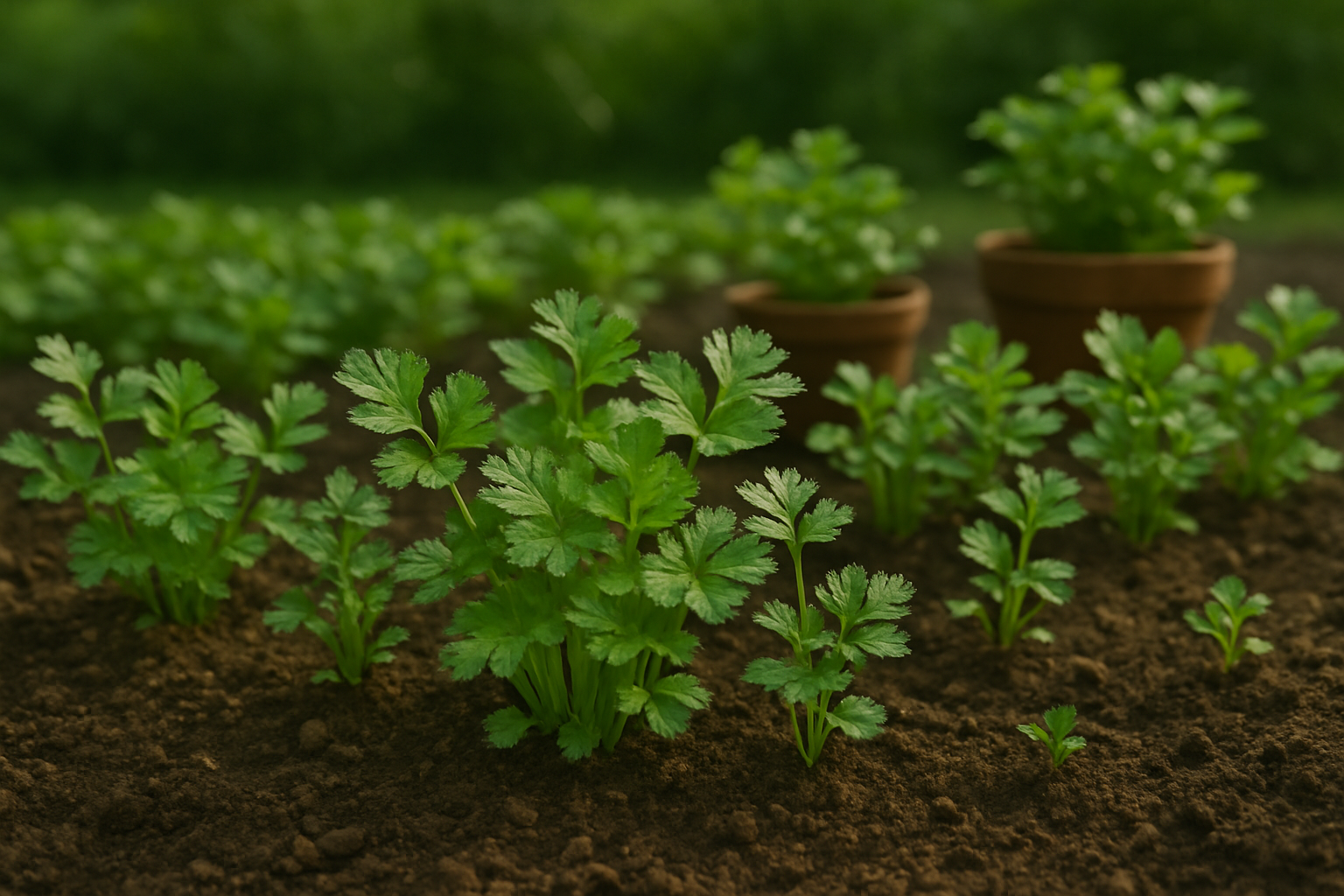Choosing the Right Cilantro Variety and Planting Location
Cilantro, also known as coriander, is a versatile herb used in cuisines worldwide. Growing it successfully outdoors starts with choosing the right variety. Some cilantro strains, like ‘Slow Bolt’ or ‘Santo,’ are specifically bred to resist heat and delay flowering, making them a smart pick for gardeners in warmer regions. For cooler climates, almost any cilantro variety will thrive, but it’s still a good idea to look for disease-resistant or quick-growing types.
When it comes to location, cilantro prefers a spot with full sun—6 to 8 hours daily—but can tolerate partial shade, especially in hot summers when some afternoon shade helps prevent premature bolting. If you’re short on space, cilantro adapts well to both garden beds and containers. Just be sure to plant seeds or starts about 6 inches apart to allow for healthy leaf growth and good airflow.
Whether you sow seeds directly into the soil or transplant seedlings, remember that cilantro develops a long taproot and doesn’t always transplant well; most gardeners find direct sowing to be the simplest method. To ensure a steady harvest, try sowing a few seeds every 2 to 3 weeks during the season to stretch your supply over time.
In cool climates, start cilantro as soon as the soil can be worked in early spring, or again in late summer for a fall crop. In warmer zones, late fall through early spring are best; the plant loves cooler weather and may bolt or become bitter quickly if started in peak heat. With the right variety and a little attention to planting conditions, you’ll enjoy healthy cilantro plants all season long.
Preparing Soil and Planting Cilantro Seeds
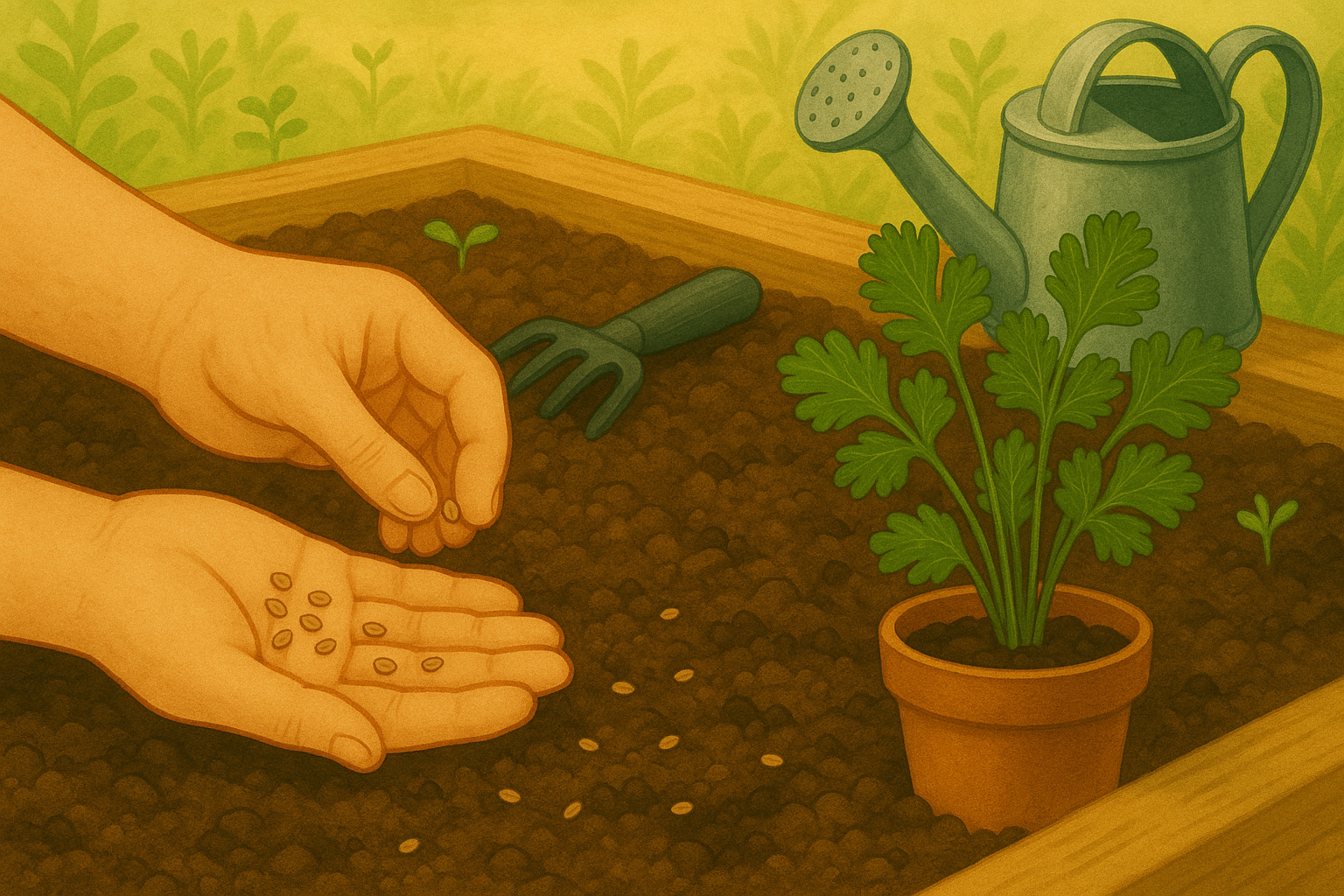
Cilantro thrives best in loose, well-draining soil that’s rich in organic matter. Start by mixing compost or aged manure into your planting bed to boost fertility. Aim for a pH between 6.2 and 6.8—slightly acidic to neutral—to ensure optimal nutrient uptake.
Avoid heavy clay soils, which can retain too much water and cause root rot. If you have clay soil, mix in some sand or quality peat-based potting mix to loosen it up. When you’re ready to plant, wait until after your last expected frost and pick a spot that gets at least four to six hours of sunlight daily.
Sow cilantro seeds about 1/4 inch deep and two inches apart. You can either make shallow furrows in the soil or hand-broadcast the seeds for a more natural look. Once sown, gently firm the soil over the seeds and water thoroughly with a gentle spray to avoid washing them away.
Keep the soil consistently moist until the seeds germinate, which usually takes 7–14 days. As soon as seedlings develop two or three leaves and reach one to two inches tall, start thinning them out. Leave about six inches between each plant to give roots room to spread and help prevent fungal diseases.
If you hesitate to pull out the extras, snip them at soil level with scissors and use them as microgreens in salads or as garnishes.
While cilantro likes moisture, it dislikes soggy soil. Water the bed deeply once or twice a week, adjusting for rainfall, and always check that the soil remains damp but never waterlogged. Following these steps will give your cilantro a strong, healthy start, setting the stage for lush, fragrant leaves all season long.
Outdoor Cilantro Care
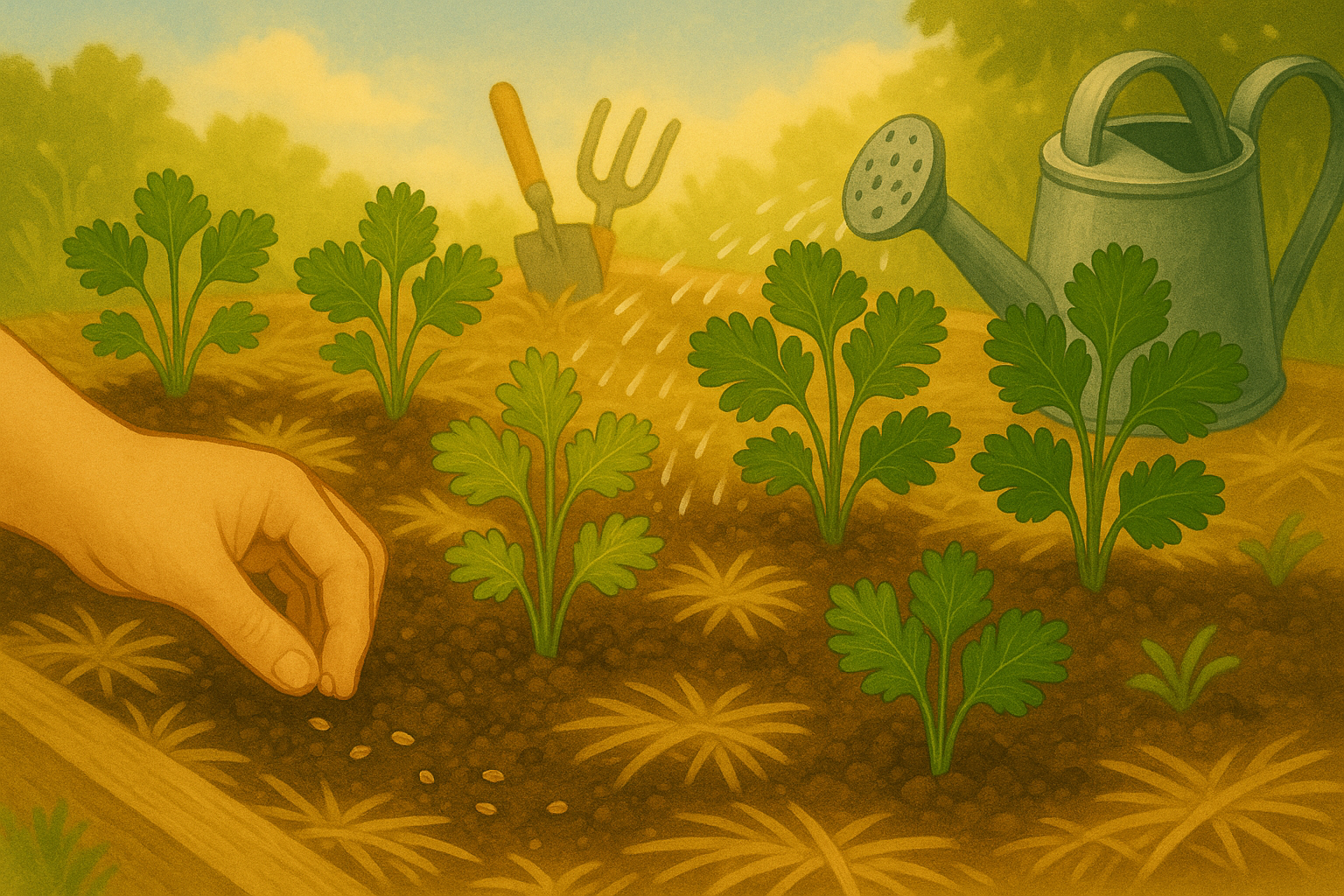
Cilantro grows best with plenty of sunlight, so aim to provide it with at least 4-6 hours of direct sun daily. In very hot climates, some afternoon shade helps prevent leaf scorch—watch for pale, yellowing leaves or crispy edges, which signal too much sun. Conversely, sparse, leggy growth and dull leaves can suggest not enough light, so consider moving containers or thinning surrounding plants if needed.
For watering, cilantro prefers consistently moist soil but not soggy roots. Check the top inch of soil every couple of days; if it feels dry, water at the base of the plant until you see moisture just starting to drain from the bottom of your pot or garden bed. Mulching with straw or shredded leaves can help retain moisture and keep weeds at bay.
When it comes to feeding, cilantro isn’t a heavy feeder. Start with a light application of balanced, water-soluble fertilizer (such as 10-10-10) every 4-6 weeks, or work in a small amount of compost at planting time. Avoid over-fertilizing, as this can cause excessive leaf growth and reduced flavor.
For the best results, grow cilantro in cool, mild temperatures—ideally between 50-75°F (10-24°C). During hot spells, try shading the plants or moving containers to a cooler spot, and watch for bolting (when the plant quickly flowers and sets seed), which usually happens if temperatures climb above 80°F (27°C) or humidity drops. Mist leaves lightly on dry days to keep humidity up and ensure steady growth.
With these simple practices, your outdoor cilantro patch will thrive, offering fresh, flavorful leaves for weeks to come.
Preventing and Solving Common Cilantro Problems
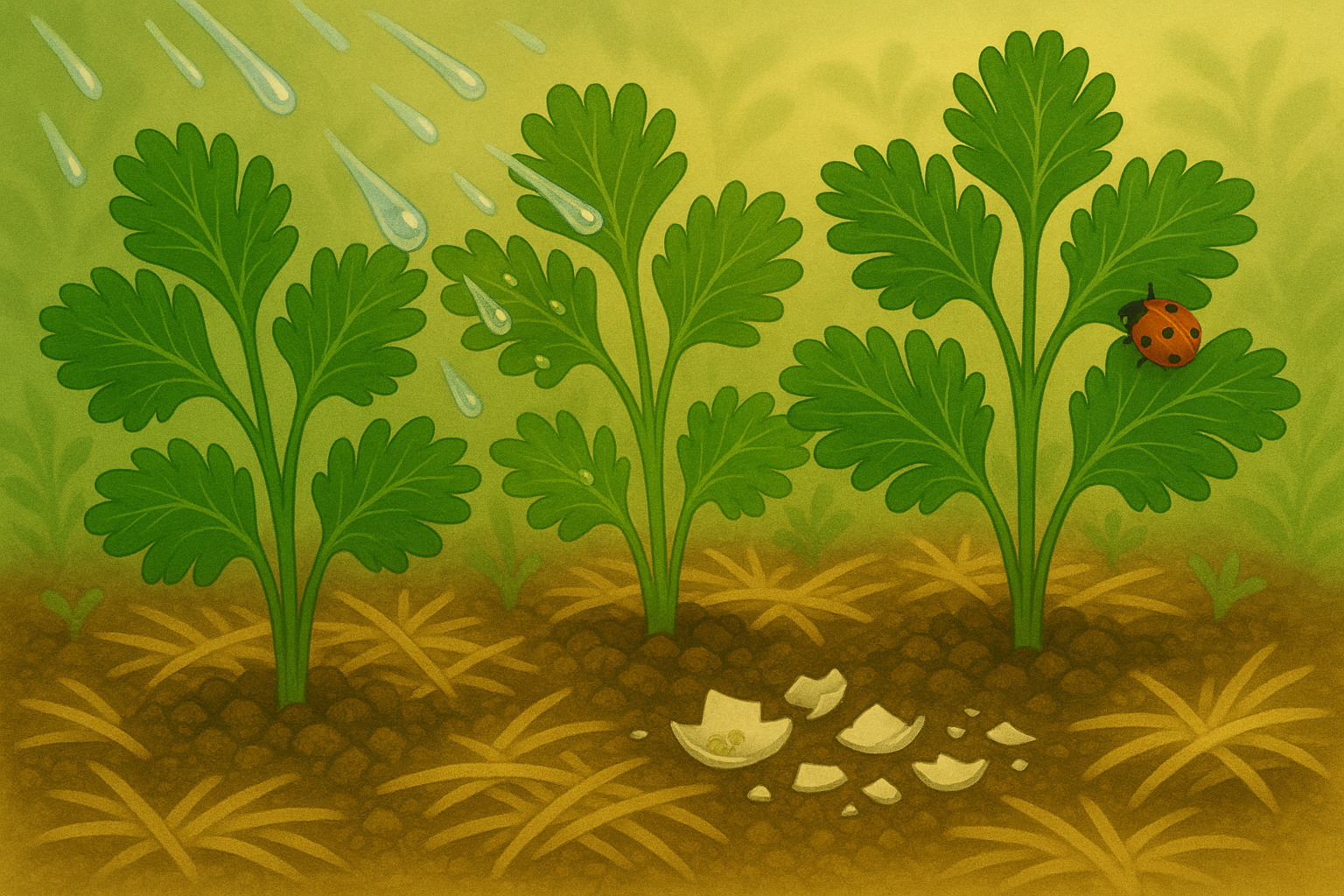
Growing cilantro outdoors can be rewarding, but it’s important to watch for common problems that can hurt your harvest.
Aphids and spider mites are the primary pests—look for tiny, clustered insects or fine webs under the leaves. A simple, natural fix is to rinse the plant with a strong spray of water or introduce beneficial insects like ladybugs.
If you spot chewed leaves, slugs may be the culprit; sprinkle crushed eggshells around your plants to deter them.
Powdery mildew is another frequent issue, showing up as white, powdery spots on leaves, especially during humid conditions. To prevent it, water at the base in the morning (not on the leaves) and ensure good airflow by not overcrowding your cilantro.
Premature bolting—when plants quickly send up flower stalks—happens in hot weather. To avoid this, choose bolt-resistant cilantro varieties, provide partial afternoon shade, and keep the soil consistently moist but not soggy.
If your cilantro starts flowering early, pinch off the flower stalks immediately to slow bolting and harvest leaves frequently. However, if bolting continues, let a few plants flower and set seed for coriander or allow them to reseed naturally for future harvests.
These simple strategies can help you enjoy a longer, healthier cilantro season.
Harvesting Cilantro and Storing It for Freshness
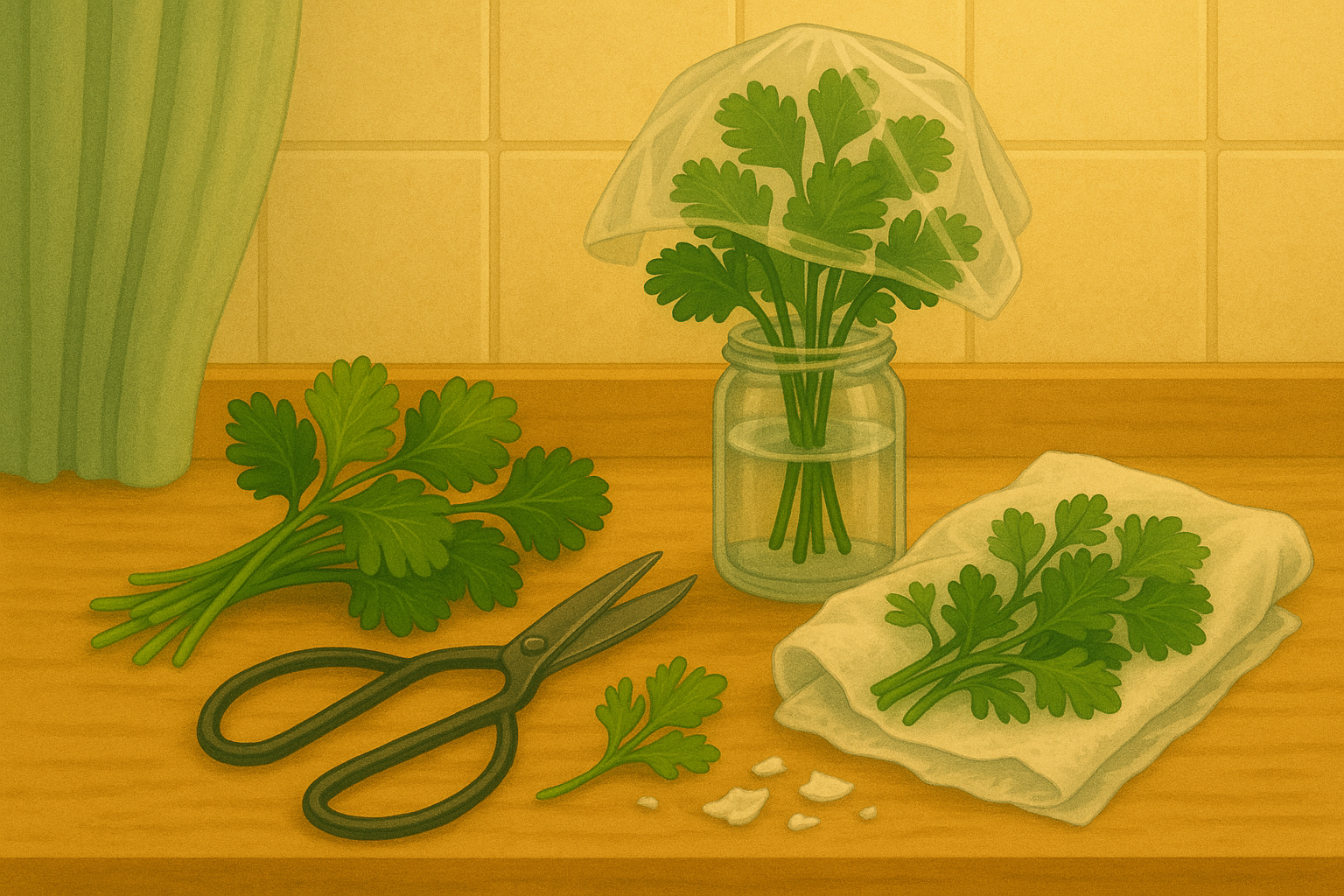
Harvesting cilantro at the right moment ensures maximum flavor and longevity. The best time to pick cilantro leaves is early in the morning, just after the dew dries and before the sun gets too hot, when the leaves are crisp and full of essential oils.
Use clean, sharp scissors or garden shears to snip outer leaves about an inch above the soil. This allows the inner leaves to keep growing and promotes further regrowth. Never cut more than a third of the plant at once; this keeps the plant healthy and encourages a steady supply.
If your cilantro starts flowering (“bolting”), let some flower heads mature to brown, then clip them to collect coriander seeds.
Storing Fresh Cilantro Leaves
- Trim the stems and place the cilantro in a jar of water.
- Loosely cover the jar with a plastic bag and keep it in the fridge—this can extend freshness for up to two weeks.
- Alternatively, wrap leaves in a damp paper towel and seal them in a bag; this method works well for smaller bunches.
Storing Coriander Seeds
- Dry the seeds thoroughly in a cool, ventilated area.
- Store them in airtight containers away from sunlight.
- To save seeds for replanting, choose the plumpest, healthiest ones and keep them labeled in a cool, dry spot until the next growing season. This ensures vigorous new plants year after year.
Using Cilantro in the Kitchen and Beyond
Fresh cilantro leaves instantly brighten up salads, tacos, soups, and rice dishes—just give them a rough chop and toss them in at the last moment to preserve their flavor. For a quick flavor boost, add handfuls of cilantro to homemade salsas or chutneys, or sprinkle over scrambled eggs and curries just before serving.
If you grow cilantro at home, try snipping leaves regularly to keep your plants lush; the more you harvest, the more foliage you’ll get. Once cilantro bolts and produces seeds, save those coriander seeds for another kitchen adventure: lightly toast and crush them to season roasted vegetables, spice rubs, or even homemade bread.
Beyond everyday garnishes, blend cilantro into herb butters, green sauces, or pesto for dipping and drizzling. Don’t let extra bunches go to waste—freeze cilantro in olive oil using ice cube trays or puree it with a splash of lime to preserve freshness for weeks.
The best way to discover all that cilantro can do is to experiment. Toss it into new recipes, from zesty marinades to refreshing smoothies. Growing and using your own cilantro opens up a world of flavor, so get creative and make the most of this versatile herb in your kitchen and beyond.
